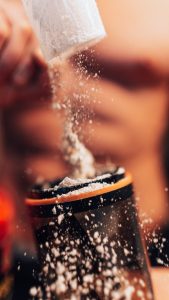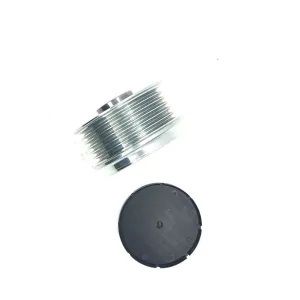Aluminum silicate is a kind of silicate with the chemical formula Al 2 SiO 5 . Since the structures of most silicates are very complex, they are often not written in the form of salts but in the form of the respective oxides of the metals. Therefore, aluminum silicate is often called Written as Al 2 O 3 ·SiO 2 . The density of aluminum silicate is 2.8 to 2.9 grams/cubic centimeter, and its refractive index is 1.56. Its Mohs hardness is related to the type of ore and moisture content, ranging from 4.5 to 7.5. Aluminum silicate powder is often used as fireproofing material , for example in the glass industry for building glass kilns.

Introduction #
Aluminum silicate: Made from hard clay clinker as raw material, it is produced through resistance or electric arc furnace melting and injection fiber forming processes. Aluminum silicate is an aluminum silicate, appearance: colorless crystals. Dissolution: Insoluble in water.
characteristic #
Low thermal conductivity, excellent thermal stability and chemical stability , does not contain binders and corrosive substances.
constituent minerals #
There are three common minerals composed of aluminum silicate, mostly found in metamorphic rocks .
Andalusite belongs to the orthorhombic crystal system .
Kyanite , belongs to the triclinic crystal system
Sillimanite , a variant of sillimanite, belongs to the orthorhombic crystal system.
The components of these three ores are all aluminum silicate, but their structures are different, so they are allomorphic crystals . Among them, kyanite and sillimanite are often used as index minerals to study the intensity of metamorphism. , when a sillimanite region appears in the ore, it can be seen from the phase diagram that it has experienced a high-temperature and high-pressure process, so it is known that the metamorphism is very strong.
application #
Common application #
1. Filler for glass, pottery, pigments and paints;
2. It is an ideal substitute for titanium dioxide and high-quality kaolin in coatings. It is widely used in paint, leather, printing and dyeing, ink, papermaking, plastics, rubber, etc. in conjunction with pigments ;
3. Used to make high-temperature resistant, fire-resistant, sound-insulating and heat-insulating cotton, boards, tubes, quilted felts, fire-resistant and heat-insulating cloth, high-temperature-resistant paper, fire-resistant heat-insulating ropes, belts, fire-proof and heat-insulating needle-punched blankets (with spinning and blowing), bricks , Inorganic fireproof decorative board . Inorganic fireproof roller shutters, etc.;
4. Used as a filler for adhesives and sealants to improve hardness, whiteness, wear resistance, weather resistance, and storage stability.
for coatings #
1. Ultra-fine aluminum silicate replaces part of titanium dioxide, and its dry film hiding power will not change and can improve the whiteness of the paint. If the dosage of titanium dioxide remains unchanged, the dry film hiding power will be significantly improved and the whiteness will be greatly improved.
2. The pH range of ultrafine aluminum silicate is 9.7-10.8, which has a pH buffering effect. Especially during the storage process of vinyl acetate latex paint, it can prevent the pH value from dropping due to hydrolysis of vinyl acetate, increase the dispersion stability of latex paint, and avoid corrosion of the inner wall of the metal container.
3. The ultra-fine and grid structure of aluminum silicate slightly thickens the latex paint system, has good suspension properties, and prevents solids from sinking to the bottom and surface water separation.
4. Ultra-fine aluminum silicate makes the latex paint film have good scrub resistance and weather resistance, and can also shorten the drying time.
5. Ultrafine aluminum silicate has a matting effect, so it can be used as an economical matting agent in semi-gloss and matte paints, but it should not be used in glossy paints.

 April 1, 2024
April 1, 2024 










